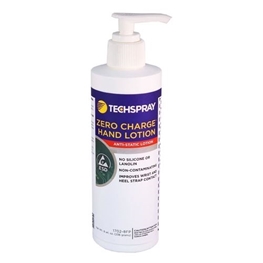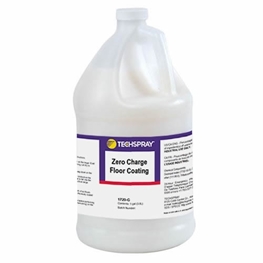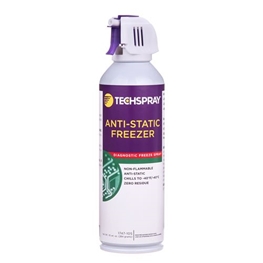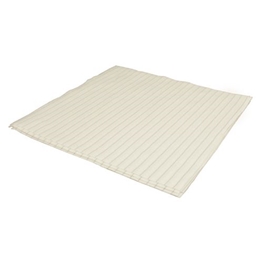Prevent Static Discharge from Damaging Sensitive Electronics
Techspray's ESD-safe products can help maintain work areas within the ANSI/ESDS20.20 standards set by the ESD Association. Electrostatic Discharge (ESD) occurs when the charges of two surfaces with a large electronic potential (difference) equalize instantaneously. The resulting discharge or spark can cause catastrophic or latent damage to electronic components.
Electrostatic discharge happens all the time, especially in dry climates and in the winter season, when there isn’t moisture in the air to help bleed the excess electrons (water is conductive, allowing the electrons to flow more easily). Normally it is nothing more than an irritation, but with sensitive electronics it can lead to PCB failures.
Without the appropriate equipment and supplies, a worker can generate thousands of volts. SMOS logic devices can be damaged by 250-3000 volts, EPROM devices by 100 volts, and microprocessor chips with as few as 10 volts. Damage can shut down functions or create intermittent problems, and it can either be catastrophic (immediate) or latent (later as in “field failure”) (source: Phil Storrs PC Hardware Book).
ESD programs maintain an equal potential by maintaining continuous contact with the ground, avoiding ESD damage. Techspray's cleaners, lotions, and coatings are an integral part of an ESD control program.
ESD Attributes
Function
Environmental & Safety
Applied Filters
FAQ's
For aerosol (1756-8S), 2 light coats will cover ~ 2.5 sq meters (27 sq ft)/can. One light coat will give you about twice that. For bulk (1756-G), a 1-mil wet coat will yield ~ 972 sq ft/gallon. Note that a 1-mil wet coat ends up at ~ 0.1 mil thick cured coat.













